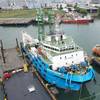In the Very Large Crude Carriers (VLCC) segment, which showed modest growth in overall volume from 2014 to 2015, the main changes were concentrated in the eastern hemisphere, says a report by Tanker Research & Consulting department at Poten & Partners.
In the Middle East, there was a significant increase in movements from the Arabian Gulf to the Red Sea.
Reported VLCC fixtures increased almost fivefold from 12 in 2014 to 56 in 2015, mainly as a result of the startup of the 400,000 barrels per day (bpd) Yanbu refinery at the end of 2014, which is located on Saudi Arabia’s Red Sea coast.
The refinery processes heavy crude from the Manifa oilfield, located offshore Saudi Arabia in the Arabian Gulf and VLCCs shuttle the crude around the Arabian Peninsula. Data from the first quarter of 2016 suggests further increases in AG – Red Sea movements.
India picked up its purchases of West African crude in 2015, resulting in a 35% increase in VLCC spot fixtures, relative to 2014. The number of VLCC fixtures from the Middle East to India reduced by almost the same number during the year.
This development seems to support the trend that India is diversifying its sources of crude oil supply to reduce its dependence on the Middle East.
While West African producers ramped up exports to India, they reduced shipments to destinations in the Atlantic Basin. VLCC fixtures to both the UK/Continent (UKC) and the U.S. almost disappeared.
In 2015, we did not record any VLCC spot fixtures from West Africa to the U.S. (compared to 5 in 2014). Movements to the UKC diminished from 17 in 2014 to 4 one year later. Data for 2016 YTD does not seem to indicate a reversal of this trend.
An analysis of the Suezmax fixtures also shows some interesting developments. Overall, Suezmax activity in the Pacific is on the rise. Movements from Mexico to the Far East picked up in 2015, as did fixtures from Kozmino to Asian destinations.
According to IEA data, China became Russia’s biggest oil customer at the end of 2015 and an increasing share of the crude is moved through the East Siberian Pacific Ocean (ESPO) pipeline. In January 2016, China imported nearly 60% of all cargoes leaving Kozmino.
Similar to the VLCCs, reported Suezmax fixtures into the Atlantic Basin generally went down from 2014 to 2015, in particular to destinations in the UKC, the Mediterranean and the U.S. (both East and West Coast).
Based on the reported fixtures, the situation in the Aframax market is somewhat less positive than it is for the larger crude carriers. Two bright spots in the Aframax data are the exports from Kozmino in the Far East (similar to the Suezmaxes) and the increase in movements from the Eastern Mediterranean.
One of the main contributors to the pickup in fixtures from the Mediterranean to the UKC is more volumes out Ceyhan, a result of the significant ramp up in Iraqi production in 2015.
While the Caribbean / USG Aframax market remains significant in terms of number of fixtures, it has declined somewhat in recent years, as less crude moves on short haul routes to the U.S. and Europe.
More crude is now directed towards the Far East, moving on VLCCs rather than Aframaxes. A future bright spot for Aframaxes could be growing crude oil exports from the U.S., which will, due to domestic infrastructure constraints, move predominantly on Aframaxes














